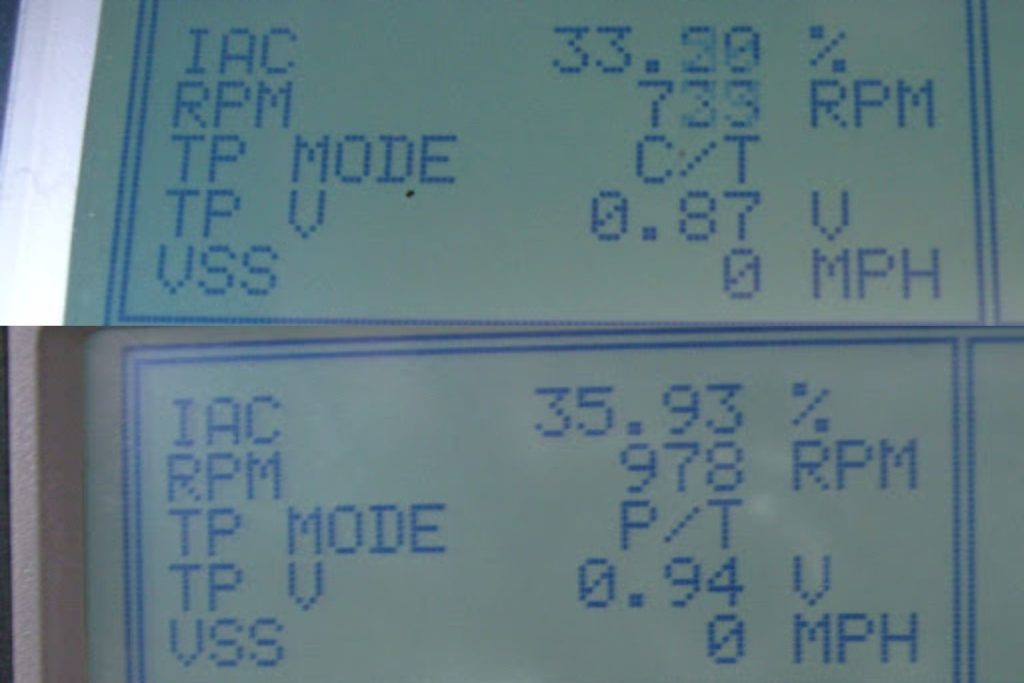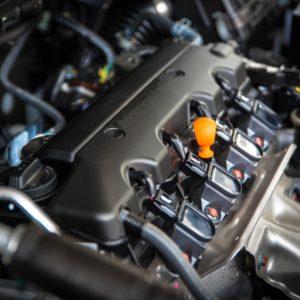Oxygen content in the exhaust is measured by oxygen (O2) sensors. They are located in the exhaust system, allowing them to detect if the engine’s air-fuel mixture is biased rich or lean.
If the powertrain control module (PCM) detects a lean condition (too much air in the air-to-fuel ratio) off idle, on-board diagnostics will set code P2177.
“Lean” means an imbalance that the O2 sensor perceives as out of balance, with 14.7:1 being the target. That’s 14.7 parts air (by weight) to 1 part fuel (by weight), which is how engineers measure fuel and air in this context. By volume, an engine uses 9,000 gallons of air for every one gallon of fuel.
Remember, O2 sensors detect oxygen, not fuel, so a misfiring cylinder will send unburned fuel and air through the exhaust, but all the O2 sensor will detect is the oxygen. It has no way to detect hydrocarbons or nitrogen. That being said, the O2 sensor’s input to the PCM will drive the fuel trims in the direction of adding more fuel due to the perceived lean condition. And it happens very rapidly.
What Does the P2177 Code Mean?
Diagnostic trouble code (DTC) P2177 stands for “System Too Lean Off Idle Bank 1.”
The vehicle’s computer uses data from several sensors to determine the correct air-to-fuel ratio to keep the engine running smoothly.

If the exhaust is getting little oxygen, the PCM assumes that it is receiving too much fuel (rich air-to-fuel mixture). As a result, fuel delivery is reduced. On the other hand, if the PCM detects a high level of oxygen in the exhaust (lean air-to-fuel mixture), fuel delivery is increased.
If the PCM is detecting a lean condition and is unable to achieve the desired balance between fuel and air under off idle operating conditions, a code P2177 will be set.
More About Off Idle or Part Throttle
“Off Idle” is also known as “Part Throttle” and may also be displayed on the scan tool as “P/T.”
When the key is first turned to the “ON” position and the PCM/ECM wakes up, the ECT, IAT, throttle position (TP) and barometric pressure are collected and stored in memory for that drive cycle. The ECT and IAT are updated during the drive cycle, as is the BARO reading at wide open throttle (WOT), but the initial closed throttle reading remains the same throughout that drive cycle. It will, however, be updated at the next key on.

An idling engine (Closed Throttle) doesn’t require nearly as much fuel as an engine at Part Throttle, and the PCM/ECM algorithms on some platforms will have this code in the library. But most platforms don’t use this code.
Note: The definition of code P2177 may be different depending on the vehicle manufacturer. Consult the appropriate repair manual or repair database for the exact code definition.
What are the Common Causes of the P2177 Code?
- Faulty O2 sensor
- Other malfunctioning sensors, such as a bad mass air flow sensor
- Vacuum leak
- Fuel injector failure
- Fuel pump failure
- Outdated PCM software or an internal hardware problem (rare)
- Exhaust leak

What are the Common Symptoms of the P2177 Code?
- Illuminated check engine light
- Decreased engine performance
- Poor fuel economy
- Engine misfire
How to Diagnose the P2177 Code
A DTC P2177 is a generic powertrain code that applies to OBD-II equipped vehicles with fuel-injected engines. While that may be the case, the steps for diagnosing and repairing this trouble code may vary depending on the vehicle’s year, make, and model.
If you’re not familiar with the process of diagnosing trouble codes yet, seeking help from a licensed mechanic is a good way of ensuring the right steps are followed. Check out some of these videos to get an idea of what the process might involve:
How to Fix the P2177 Code
Attempting to fix a P2177 code can be frustrating and confusing if you’re not confident with your DIY skills yet. In this case, it’s better to leave the job to a professional. If you have the right tools and know-how to troubleshoot this DTC yourself, make sure to consult the right repair manual or an online repair database for vehicle-specific repair information before proceeding.
Any information provided on this Website is for informational purposes only and is not intended to replace consultation with a professional mechanic. The accuracy and timeliness of the information may change from the time of publication.


















